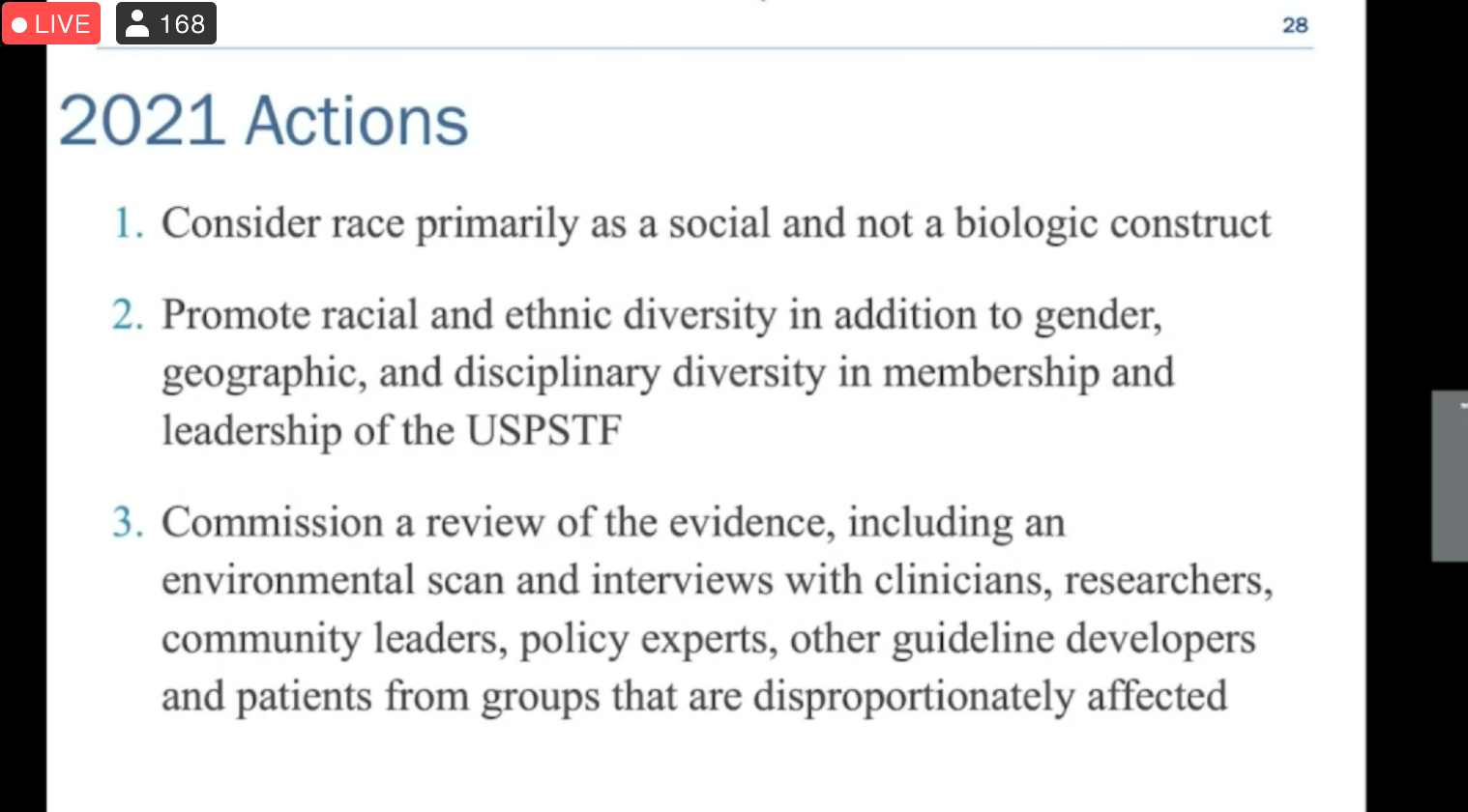Implementing recommendations to improve women’s health
“When you leave populations behind from the data, you disadvantage the population that bears the brunt of the disease,” said Melissa Simon, MD, MPH, during her presentation on recommendations to improve women's health at this year's ACOG meeting.
This article is from one of the many presentations from the American College of Obstetrics and Gynecology’s (ACOG) Annual Clinical and Scientific Meeting, which started on April 30.
To register and for more information, check out www.acog.org.
Follow www.contemporaryobgyn.net for coverage during the conference, which extends through Sunday, May 2.
The U.S. Preventive Services Task Force (USPSTF) is keen on implementing recommendations to improve women’s health, and it’s been taking a thorough, evidence-based approach as guidelines are formulated that take into consideration more vulnerable, historically disadvantaged populations.
“When you leave populations behind from the data, you disadvantage the population that bears the brunt of the disease,” said presenter Melissa Simon, MD, MPH, who is the George H. Gardner Professor of Clinical Gynecology and Vice Chair of Clinical Research in the Department of Obstetrics and Gynecology at Northwestern University Feinberg School of Medicine.Simon also is the founder and director of the Center for Health Equity Transformation and the Chicago Health Equity Collaborative, and co-program leader for cancer control and survivorship at the Robert H. Lurie Comprehensive Cancer Center. Her expertise is implementation science, minority health, community engagement, and health equity, according to ACOG.

“We have really committed to doing a better job of examining the data,” she said. She used the analogy of an apple tree where two separate people want the fruit, but one is better equipped because apples are falling to that person; the person on the other side of the tree, however, is having problems capturing any apples at all, whether that is due to the tree being bent in a certain way, not having the correct equipment to access the apples, or other factors over which the person has no control.
She said that social and economic factors account for 30-40% of health, and that it’s important to frame this. Genetics and biology only account for 10% of what creates and helps to maintain health. Health behaviors account for 30%; clinical care and physical environment each also account for 10%. The design and architecture of a system must be taken into consideration and components addressed to adequately achieve health justice. “Design and architecture really matter, to care for all our women,” she said. Further, design and architecture foundations such as systemic racism need to be acknowledged. “Always acknowledge history and distrust that we’ve earned, unfortunately,” she said. That includes now making sure that the output of studies matches the populations that medical practitioners intend to treat.
In inequities in quality of health care, Simon cited the 2018 Agency for Healthcare Research and Quality (AHRQ) Quality and Disparities Report, where compared to White people, Black people had worse care on 76 of 190 (40%) quality measures. Compared to White people, Hispanic/Latino people had worse care on 58 of 167 (35%) quality measures. There also is a higher-than-average prevalence of Type 2 diabetes mellitus in African Americans, American Indians, or Alaskan natives, Asian Americas, Hispanic or Latinos, and native Hawaiians or Pacific Islanders.
When it comes to breast cancer, more Black women die each year from this disease than White women (31 vs. 22 breast cancer deaths per 100,000 women annually), she said.
The USPSTF has used and is using thoughtful, carefully cultivated data to inform preventive screening recommendations for colorectal; cervical cancer screenings; and breast cancer. Breast cancer screening is under review again. Recommendation statements are for asymptomatic patients. Simon cautions also that not all screening is beneficial, and that there are false positives and false negatives. “There are harms of screening,” she said.
But for example, in the latest colorectal screening guidelines, the cutoff now is age 45, whereas it was age 50. “Black adults were not being addressed well enough,” she said. “Death rates were much higher.”
When they undertook a systematic review to inform the modeling for the colorectal screening recommendations, they found consistent evidence of inequities across the screening-treatment continuum, she said. That included access to screening; quality of screening; time from diagnosis to treatment; and quality of treatment.
Breast cancer screening is under review again, and Simon encouraged attendees to take advantage of the public comment period. “Having public comment periods are super critical along the entire recommendation screening pathway,” she said. The public comment period, for example was critical in formulating new cervical cancer screening recommendations.
For more information, you can visit https://www.uspreventiveservicestaskforce.org/uspstf/, where you will find the public comments and nominations tab. When breast cancer screening is open to public comment, it will be posted there.
Rising endometriosis rates linked to increased pregnancy complications
May 19th 2024A new study presented at the 2024 ACOG meeting reveals a significant rise in endometriosis among pregnant women over the past 20 years, linking the condition to increased obstetric and neonatal complications.
Read More
Buprenorphine use in pregnancy linked to decreased fetal breathing movements
May 18th 2024According to a poster presented at ACOG 2024, use of the synthetic opioid buprenorphine depressed fetal breathing in biophysical profile assessments, but had no significant impact on other factors like amniotic fluid index or fetal tone.
Read More
Laparoscopic RFA linked to enhanced pregnancy outcomes in uterine fibroid patients
May 18th 2024A recent study presented at the 2024 ACOG Clinical and Scientific Meeting reveals that laparoscopic radiofrequency ablation significantly improves pregnancy outcomes for women with uterine leiomyomas.
Read More
